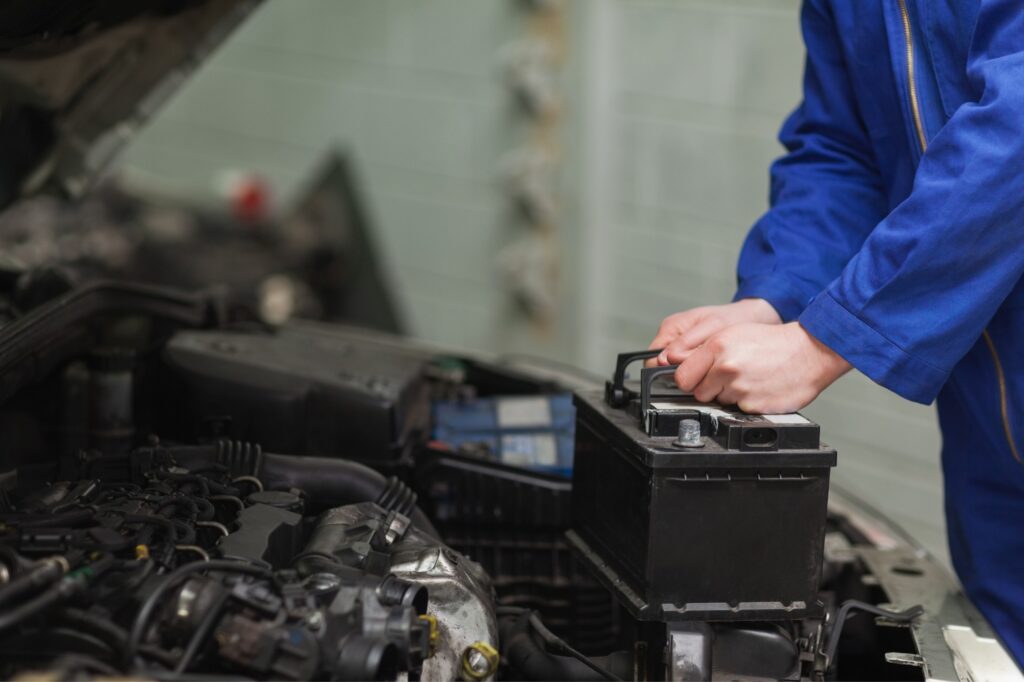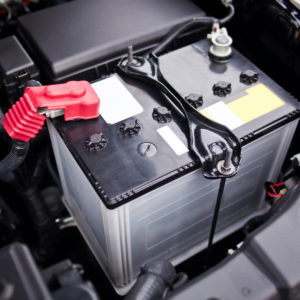Your car’s battery is expected to last for a couple of years before you need to replace it. But if you suddenly find yourself in a car that won’t start despite having a new battery, you might want to conduct a thorough inspection of the charging system and other components.
Common Reasons Why Your Car Won’t Start Even With a New Battery
In some cases, installing a new battery isn’t enough to get your vehicle going. If your car has a new battery but won’t start, here are some of the most common reasons you might want to check out.
Improper Installation of the Battery
Don’t panic if you’ve recently installed a new battery but your car won’t start. The issue could be as simple as loose battery cables that need to be reattached properly. When installing a battery, the cables shouldn’t move when you wiggle the terminals. Otherwise, you’ll need to re-torque the terminals.

Hooking up a new battery the wrong way is an entirely different story.
If you accidentally connected the positive cable to the negative post and the negative cable to the positive post, then you basically reversed the battery’s polarity.
This means that the hot wire and neutral wire aren’t connected as they should, putting the diodes and transistors at risk of failing.
Improper installation of the battery can damage the alternator, short the battery, blow a couple of fuses, and even melt some wires.
In some cases, the engine will still turn over, but some warning lights might pop up on the dash, including the ABS, EPS, and battery warning lights.
If this is the case, you could be looking at multiple blown fuses, which can be troublesome to check and replace one by one.
In some (rare) cases, the issue is as simple as leaving the plastic caps on the new battery.
Alternator Problems
The alternator is the heart of the charging system, and it is responsible for keeping the battery fully charged.
The alternator uses the principle of electromagnetic induction to convert mechanical power into electrical power.
To keep the battery fully charged at all times, the alternator must be able to produce a voltage higher than the battery’s. However, keep in mind that excessively high voltage can damage the battery and other electrical components.
A damaged alternator can easily drain a new battery. Poor electrical connections between the battery’s positive terminal and the alternator output terminal can prevent your car from starting because the battery isn’t charging properly.
It’s also important to check the overrunning clutch if there is little to no alternator output. Inspect the overrunning alternator pulley or overrunning alternator dampener for issues.
The pulley should freewheel in one direction and rotate the alternator rotor when moved to the opposite direction.
Diagnosing alternator problems can also be done with a fused jumper wire. Use the wire to connect the positive and negative terminals of the alternator to the corresponding battery terminals.
If the alternator output improves, you could be looking at wiring issues, such as corroded connections or loose grounds.
A bad alternator shouldn’t keep the vehicle from starting unless there’s a short circuit somewhere.
Parasitic Draw
If you suspect that your new car battery is getting drained, your vehicle could be experiencing a parasitic draw.
A parasitic draw occurs when certain components continue to draw power even when they shouldn’t.
Electronically tuned radios, computers and controllers, and the alternator (through diode leakage) continuously draw a slight amount of current from the battery even when the ignition is off.
However, a sudden electrical drain on your new battery is a different problem.
To test your battery for parasitic draw, you can conduct an electrical drain test or parasitic load test.
When conducting this test, keep in mind that using a voltmeter is not an option. The voltmeter’s high resistance can result in irrelevant readings and inadequate diagnostic information.
Instead, an inductive DC ammeter and a digital multimeter that’s set to read milliamperes are better suited for the job.
Blown Fuse
Fuses protect wires from overheating and getting damaged due to excessive current flow. They are typically made from fine tin conductors in glass, plastic, or ceramic housing.
A fuse generally blows when there’s excessive current flowing through the circuit. A blown fuse will stop current flow, preventing other components from getting damaged in the process.
The same problem can occur if a main relay or any relay blows.
Bad Starter
The starter motor converts electrical energy into mechanical energy to crank the engine. A solenoid or relay controls the current that flows to the starter motor.
Like many electrical components, the starter can fail because of loose or corroded connections or a stuck solenoid.
Seized Engine
An underlying electrical issue isn’t the only possible reason why an engine won’t turn.
A seized engine won’t crank or turn because of mechanical failure. In most cases, lack of lubrication can cause the engine’s metal parts to rub against each other, creating too much friction and heat.
Frozen piston rings as a result of rusting can also cause the engine to seize up, especially for old cars.
A seized engine is often the result of poor maintenance. To prevent this from happening, it’s important to stick to your vehicle’s preventive maintenance schedule.
Doing so will also help you address other minor issues before they turn into bigger and more expensive problems.
Battery Basics
Automotive batteries generally last anywhere between three and seven years. However, certain practices can reduce their intended lifespan.
For example, charging voltages higher than 15.5 volts can warp the plates due to extreme heat. Overcharging can also cause the active plate material to disintegrate and fall out of the framework.
Loose battery hold-downs can also cause the battery to vibrate excessively, leaving the active materials to shed.
Taking Care of Your Car Battery
If you want to take good care of your car battery and prevent it from becoming inoperative, you need to avoid short trips, drive frequently, get regular maintenance, and clean the battery.
Avoid Short Trips
If you want to prolong your car battery, refrain from making short trips. If you don’t drive long enough, your alternator won’t have enough time to replace the charge used to start your car. Short, frequent trips of about 5-10 minutes will drain your car battery so make sure to go for a nice long drive at least once every few weeks. This will give your alternator time to charge the battery.
Conduct Regular Maintenance
To keep your vehicle in good condition, it’s strongly recommended to bring it to a mechanic at least twice a year for maintenance and servicing. This way, all auto parts can be inspected and you can easily singly out components that are damaged, inoperative, or not working as intended.
Clean Your Battery Frequently
Keeping your car batteries clean is a good way to keep it in good condition. Mud, grime, dirt, and other unwanted contaminants can accumulate on the battery, disrupting its ability to hold charge or power the vehicle. This is doubly true if the battery is corroded.
Get Your Car Back on the Road With a New Alternator
A faulty alternator is the most common reason for a battery that isn’t charging properly. This is a serious problem since it can keep you from starting your vehicle and get you stranded in distant locations. If you need a new alternator, look no further than CarParts.com.
Browsing for alternators in our easy-to-navigate website is a breeze. You can see all the compatible alternators and shop for one with just a few clicks. Use our vehicle selector to view the alternators that fit your car, truck, or SUV. Then, use our filters to narrow down your search based on your preferences. We have warehouses across the country to maximize order efficiency. Our 24/7 customer service is available to answer any queries you might have related to the part or if you need assistance.
Check out our selection of high-quality alternators here at CarParts.com and order one today!
Any information provided on this Website is for informational purposes only and is not intended to replace consultation with a professional mechanic. The accuracy and timeliness of the information may change from the time of publication.
































